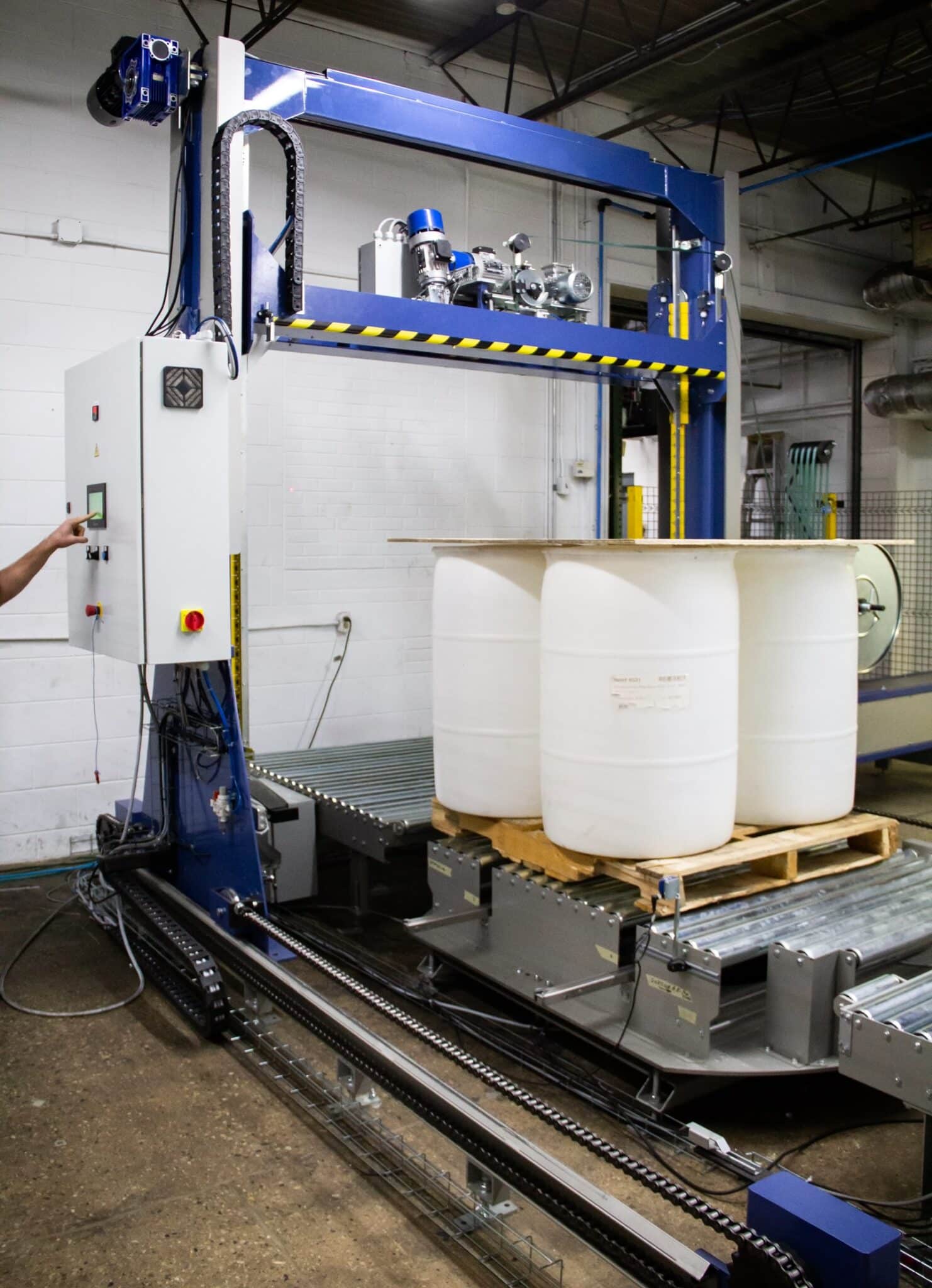
Manually strapping pallets for shipment can damage products due to human error and fatigue. This is why many companies turn to pallet strappers to secure their loads.
However, choosing the wrong type of machine will lead to similar lackluster results. Therefore, selecting the right equipment is essential to ensure optimal performance.
Read on to learn more about horizontal vs. vertical strapping systems and how to determine which one is right for your operations.
Pallet strappers are indispensable tools in industrial settings. They provide a reliable and efficient way to secure goods on pallets for storage, handling, and transportation. This ensures stability during transit and minimizes the risk of product damage or accidents.
There are two main types of pallet strappers: horizontal and vertical. They are very similar functionally and operationally. The main difference is the direction in which the strap is placed.
Each offers unique advantages based on the specific application and requirements.
Horizontal pallet strappers apply straps horizontally around the load and pallet. This method is ideal for securing products that might shift sideways during transit. They’re used for heavy products that stretch film would not adequately hold together in transit. They provide stability by preventing shifting, enhance security, and are easy to apply. Additionally, they also ensure uniform tension distribution and offer handling flexibility for pallets with varying heights.
These machines are commonly used in food and beverage, agriculture, and heavy manufacturing industries. In agriculture, produce crates need to breathe and would spoil if wrapped in plastic. They’re also ideal for stacking crates, bricks, blocks, and drums.
Vertical pallet strappers apply straps vertically around the load and pallet. This method compresses the load and is ideal for tall or unstable products. They enhance handling stability and can be more space-efficient when being added to a manufacturing line. However, it’s important to note that they take up more space than their horizontal counterparts. Vertical strapping is often used for heavy products or products that must be bundled tightly to a pallet. It is a reliable way to secure products for transport and is essential for many industries.
Vertical strapping machines are used in a wide variety of industries. These include logistics, lumber, paper, metals, manufacturing, construction materials, automotive, and food and beverage.
Selecting the right pallet strapper for your operation goes beyond simply choosing horizontal or vertical. Here are some key factors to consider:
Product Characteristics: Your goods’ size, shape, and stability play a crucial role. Horizontal strapping excels at securing loads prone to side-to-side movement during transport. Vertical strapping stabilizes tall or top-heavy loads that might tip over.
Handling and Transportation Needs: How will your strapped pallets be transported? Vertical strapping might be preferable if stacking is involved because it compresses the load. Horizontal strapping is the better choice for pallets that need to stay stable on a flat surface.
Integration with Existing Equipment: Take into account your existing production line and conveyor setup. Horizontal strappers typically require less upfront space, while vertical strappers may need additional space for the strapping head to move up and down. Ensure compatibility between your existing equipment and the chosen strapping system.
Budget Limitations: Pallet strappers are priced based on features and automation levels. Think about your budget and prioritize functionalities that best address your needs.
Production Volume: The volume of pallets you need to strap daily will impact your choice. High-volume operations might benefit from fully automatic strappers to improve efficiency.
Automation and Equipment: The availability of automated strapping equipment and the configuration of your production or packaging line may also influence the decision of which type of strapping equipment you add. If you need vertical strapping for your product, plan for the additional space requirements. The footprint is generally larger for a vertical strapper than a horizontal strapping machine.
In some cases, you may benefit from horizontal and vertical strapping on the same product for maximum security. Ultimately, the best choice depends on your specific needs and the characteristics of your products.
Horizontal pallet strappers often provide a cost-effective solution for businesses on a budget. Due to their smaller footprint, vertical strappers might be more suitable in space-constrained environments.
Production volume is another factor to consider. High-volume operations often benefit from fully automated strapping systems. Manual strapping can become a bottleneck in these environments and slow down the entire packaging process.
The nature of the goods being strapped also plays a significant role. Heavy or tall items require vertical strapping, while stable and stackable goods could be effectively secured with horizontal systems.
Here’s a helpful table that provides a side-by-side comparison of the two:
| Factor | Horizontal Pallet Strappers | Vertical Pallet Strappers |
| Budget | Generally more cost-effective. | Typically more expensive due to larger size and complexity. |
| Space Constraints | Smaller footprint, suitable for tighter spaces. | Larger footprint, requires more space around the machine. |
| Production Volume | Ideal for moderate to high-volume operations, often cost-effective. | Best for high-volume operations needing tight load compression. |
| Nature of Goods | Suitable for stable, stackable goods. | Ideal for tall, heavy, or top-heavy loads requiring strong compression. |
| Load Stability | Provides stability by preventing shifting, ideal for side-to-side movement. | Enhances stability by compressing loads, preventing toppling or expansion. |
| Integration with Existing Equipment | Often easier to integrate with existing setups, especially if space is a concern. | May require more extensive integration, particularly in terms of conveyor layout. |
Vertical and horizontal strappers each provide distinct advantages for securing products during transport. Strapping is essential for preventing damage and ensuring that goods arrive at their destination in optimal condition. The decision between a vertical and horizontal strapper should be based on the specific requirements of your product. In some cases, using both types may be necessary to address different tasks effectively. It’s important to note that vertical strappers typically come with a higher price tag, require more conveyor space, and are generally larger machines. Ultimately, the right choice depends on the nature of your products and your operational needs.
Handle It® is your trusted expert in pallet strapping solutions. We offer a wide range of customizable machines to suit different applications. Click below to explore the features and benefits of these two strapping solutions in-depth and discover which is right for your operations.
BACK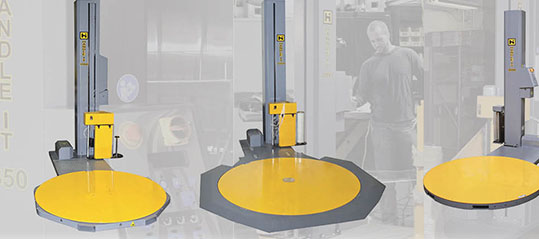
Shop our wide variety of pallet wrapping machines and stretch wrappers to improve your current packaging process.
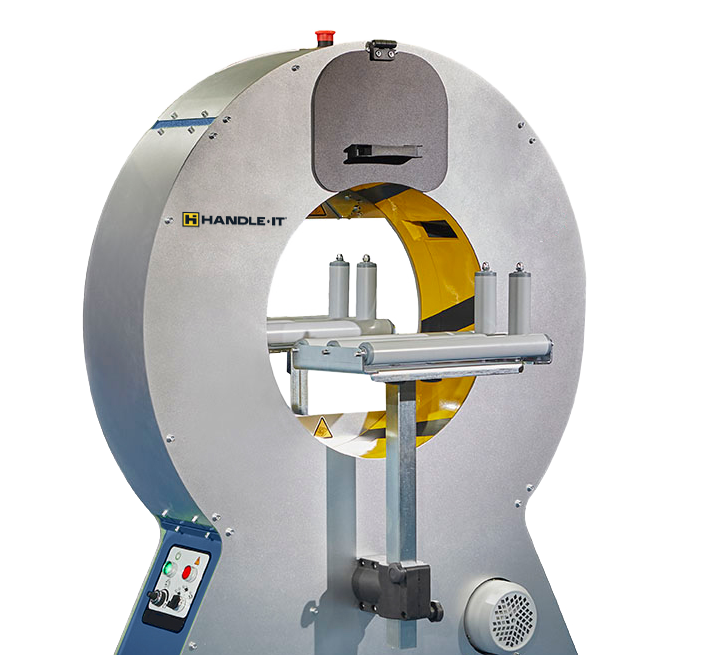
Shop our several types and sizes of orbital wrapping machines to meet your horizontal product bundling needs.
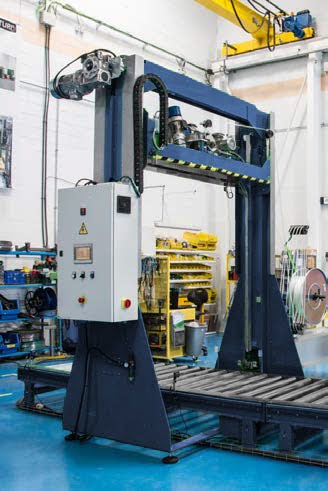
Shop our pallet strapping equipment to secure your products for safe and reliable transport.
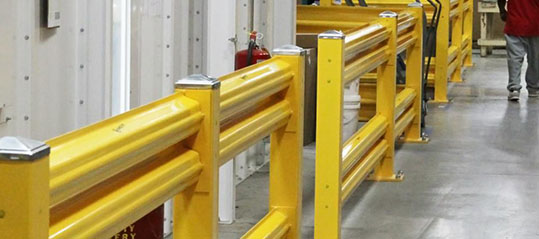
Shop our guard rail systems and components to improve the safety of the people, structures and items in your warehouse.
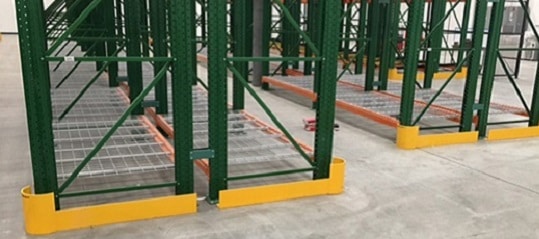
Shop rack & post protectors to decrease the damage to your pallet racks and posts due to impact from forklifts and pallets.